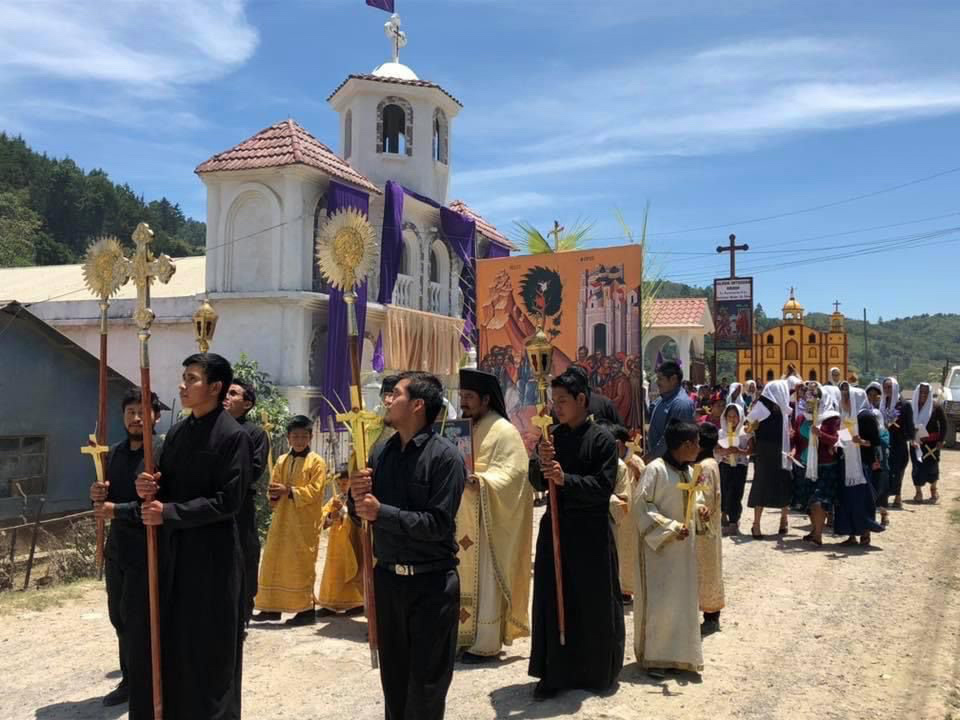
DAVID I KLEIN, in a report published by Religion News Service, reports on the growth of the Orthodox church among Indigenous communities in the traditionally Roman Catholic-dominated Central American nation of Guatemala…
When the clergy and seminarians of the St Andrew’s Seminary in Aguacate, Guatemala, roll into town they have their work cut out for them.
“On day one, we did the liturgy, 10 baptisms, and seven chrismations,” explained the Fr Thomas Manuel, an Orthodox Christian priest. “Then the next day, we did another visit, we had nine confessions, the Divine Liturgy, four chrismations, three weddings and a baptism.

The Indigenous Orthodox Christian community participates in a procession for Palm Sunday around the village of Aguacate, Guatemala. PICTURE: Fr Evangelios Pata and Fr Thomas Manuel
The men’s workload is their own doing. Established only a decade ago in a country traditionally dominantly Roman Catholic, Guatemala’s Orthodox Christian community is so successful that its few clergy are in a constant state of being overwhelmed.
Guatemala’s border with Mexico is a region of volcanic mountains and fertile farmland. For centuries, this area has been largely occupied by the Indigenous Maya people, whose great pre-Columbian Mesoamerican civilisation once spanned from Mexico’s Yucatan Peninsula to El Salvador’s Pacific coast.
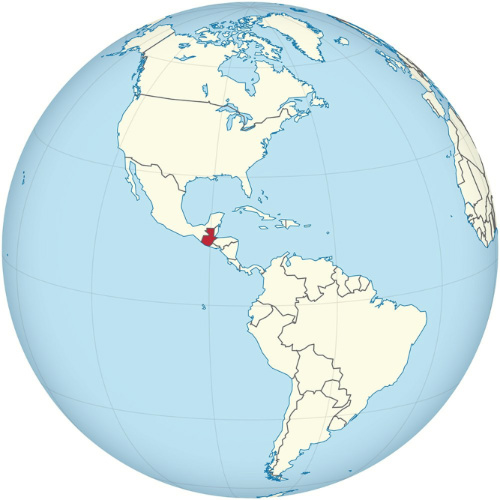
Guatemala, red, located in Central America. MAP: Courtesy of Wikipedia/Creative Commons
While in 1970 Guatemala was more than 90 per cent Catholic, today less than 45 per cent of Guatemalans identify that way. Another 42 per cent identify as Protestants, according to a 2019 report by the US State Department.
Like the rest of Latin America, since the arrival of the Spanish, for centuries religious expression in the region had mostly been dominated by the Roman Catholic Church.
That’s changing fast. Guatemala has been in a state of religious flux since in the mid-1990s and the end of the country’s decadeslong civil war.
While in 1970 Guatemala was more than 90 per cent Catholic, today less than 45 per cent of Guatemalans identify that way. Another 42 per cent identify as Protestants, according to a 2019 report by the US State Department.
One aspect of the country’s changing religious landscape is the conversion of Indigenous people in the north of the country to the Orthodox Church in 2010, the work of a charismatic former Catholic priest and one-time parliamentarian, Fr Andres Giron.
Long before he left the Catholic faith, Giron became a pariah to many in Guatemala’s establishment for his impassioned support of land reform.
As a priest, Giron associated himself with the most impoverished and dejected portions of Guatemalan society: Indigenous communities that had barely survived an attempted genocide by the Guatemalan army in the early 1980s. According to a 1988 profile in The New York Times, Giron earned himself the nickname “Father revolutionary” by both his supporters and opponents.
Though not Indigenous himself, five of Giron’s own family members were slain amidst the violence of the civil war, and in a country where land is jealously held by a tiny but powerful elite, advocating for land reform put a target on Giron’s head, forcing him, at times, to carry a weapon for his own protection or hire armed guards as he travelled from village to village.
It was in those villages that Giron became disillusioned with the Catholic Church.
“They never had a favoured status within the scheme of things” explained Fr John Chakos, who knew Giron well. “but Father Andres began to speak on their behalf.”
Many Indigenous people flocked to Giron’s worship services.
“He was their hero, their Moses,” Chakos explained. “One community after another joined his church.”
He was soon expelled from the Catholic Church for his efforts, dampening his movement. After a series of assassination attempts, he went into exile in Mexico.
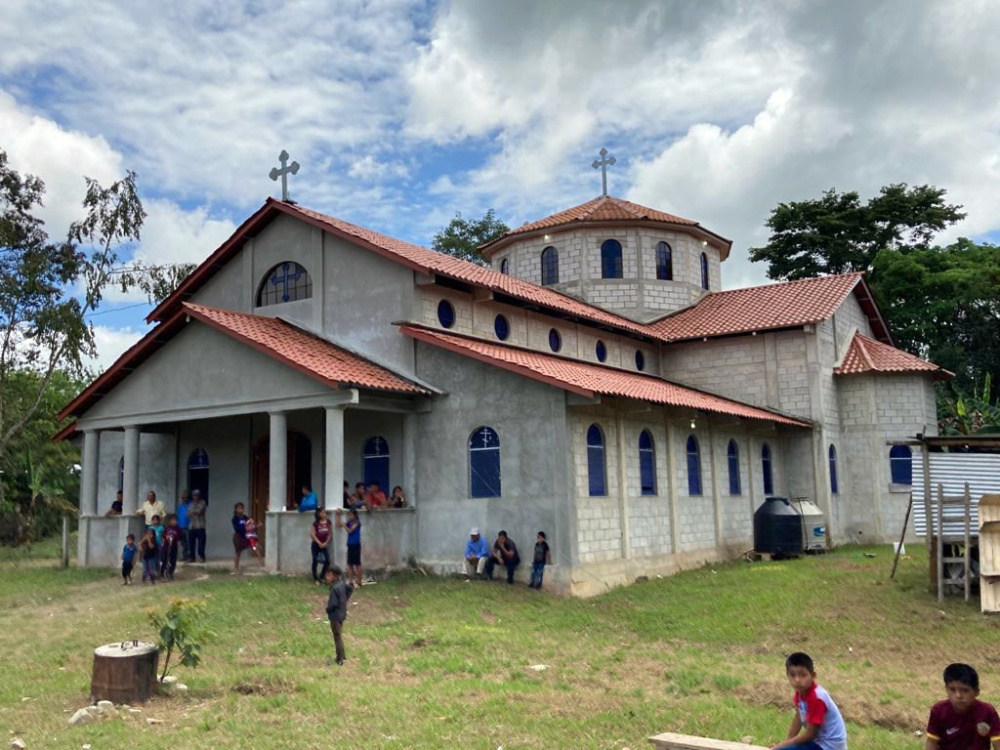
The Orthodox Christian parish of St John the Baptist in Los Angeles Ixcan, Guatemala. PICTURE: Fr Evangelios Pata and Fr Thomas Manuel
The Maya were also disenchanted with Catholicism. Largely ignored by the official leadership, they had also had enough of the liberation theology espoused by dissident Catholic priests, which helped to inspire anti-government rebels.
“The people were not happy with the political focus of the Catholic Church,” Chakos said.
Some opted out of religion entirely. About 11 per cent of Guatemalans identify as non-religious today. Others were attracted to Pentecostal and other evangelical sects, but their appeal was limited, as the leaders of these groups were aligned with US-backed government troops. Yet others adopted pre-Christian Indigenous traditions.
In short, they were hungry for a new direction when Giron came to lead them to Orthodoxy.
Giron had spent much of his exile in Rome, where he had discovered the Greek Orthodox Church. Upon his return, he introduced his former flock to so-called “Non-canonical’’ movements that are Orthodox-adjacent.
At the same time he reached out to Chakos, who spent more than 30 years as an Orthodox priest in the US, to discuss the possibility of bringing his community into the Orthodox mainstream.
By 2010, Giron completed his conversion to Orthodox Christianity and was followed by masses of his followers. He passed away in 2014, but others have continued his work.
Estimates of how many converts there are vary widely. Claims that the community numbers more than 100,000 seem exaggerated: The last time the Eastern Orthodox Church saw a mass conversion on such a scale, it was the pagan Slavs of Kievan Rus, a precursor to the Russian Empire in the 9th century. Manuel is far more conservative, putting the total between 10,000 to 15,000 at most.
What’s inarguable is that in the last decade, Orthodox Christian communities have popped up in some 120 villages across northern Guatemala and southern Mexico. The largest is in Aguacate, where the seminary is located, with about 1,000 members. Most churches draw closer to 100.
“It’s still a pretty staggering number of people,” said Manuel, a US-trained missionary who relocated to Guatemala with his family to help build the community into a self-sufficient parish of the Ecumenical Patriarchate of Constantinople. Even if you put it at 8,000, or 10,000, you know, that’s still a huge population of people that go from one tradition to another overnight.”
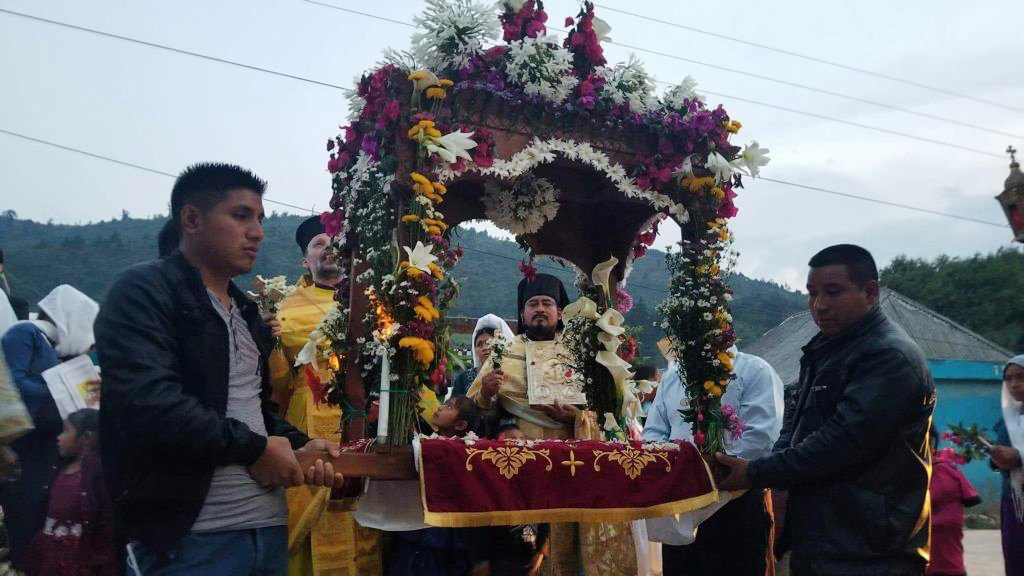
The Orthodox Christian community holds a traditional funerary procession for Jesus on Good Friday, after commemorating his crucifixion that morning, in Aguacate, Guatemala. PICTURE: Fr Evangelios Pata and Fr Thomas Manuel
There are only five native priests to serve the community, including their vicar, Fr Evangelios Pata, but Manuel is hard at work training more.
Right now, there are 10 students in the St Andrew’s Seminary – named for Andres Giron. The usual Orthodox curriculum has been adapted for Guatemalan circumstances. Unlike in the US where seminarians must have already completed a college degree, at St Andrew’s, they only require a high school diploma, a more common terminal degree in Guatemala.
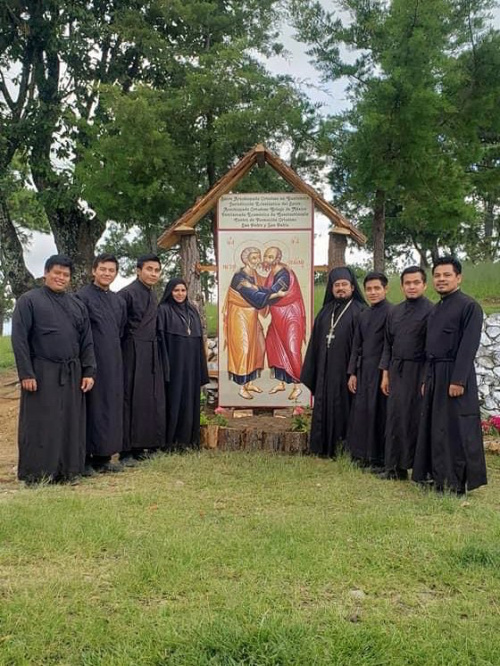
Clergy and seminarians of the St Andrew’s Seminary in Aguacate, Guatemala. PICTURE: Fr Evangelios Pata and Fr Thomas Manuel.
Another requirement is that they speak Spanish: For most of the Indigenous Orthodox faithful in Guatemala, Spanish is a second language. But it is a necessary lingua franca, as in their home villages, some 22 different languages are spoken.
Manuel’s students have also had a more hands-on training than most Orthodox priests receive.
“I think of them as super-seminarians, because they do everything from study to building construction,” he said.
In addition to building churches and community centres, the priests have also helped to set up a much-needed medical clinic at the cathedral in Aguacate.
“This medical outreach is quite extensive,” Chakos explained. “We bring doctors in from the United States, and they come in to offer medical services, because people in these villages that we serve have relatively little access to medical care professionals.”
Manuel dreams of what could be done with more help. “I would like to see it so that this first batch of 10 seminarians multiplies to 50,” Manuel said. He also hopes the community will be able to set up more educational institutions and medical clinics as they spread.
But most of all, he believes his job is to help them become self-sufficient communities who can chart their own spiritual path within the Orthodox Church without outside help.
Though Manuel has come from a foreign land to build churches, “the real missionaries,” he said, “are the five Indigenous priests, the seminarians and all the people for whom this is their country, this is their home.”





